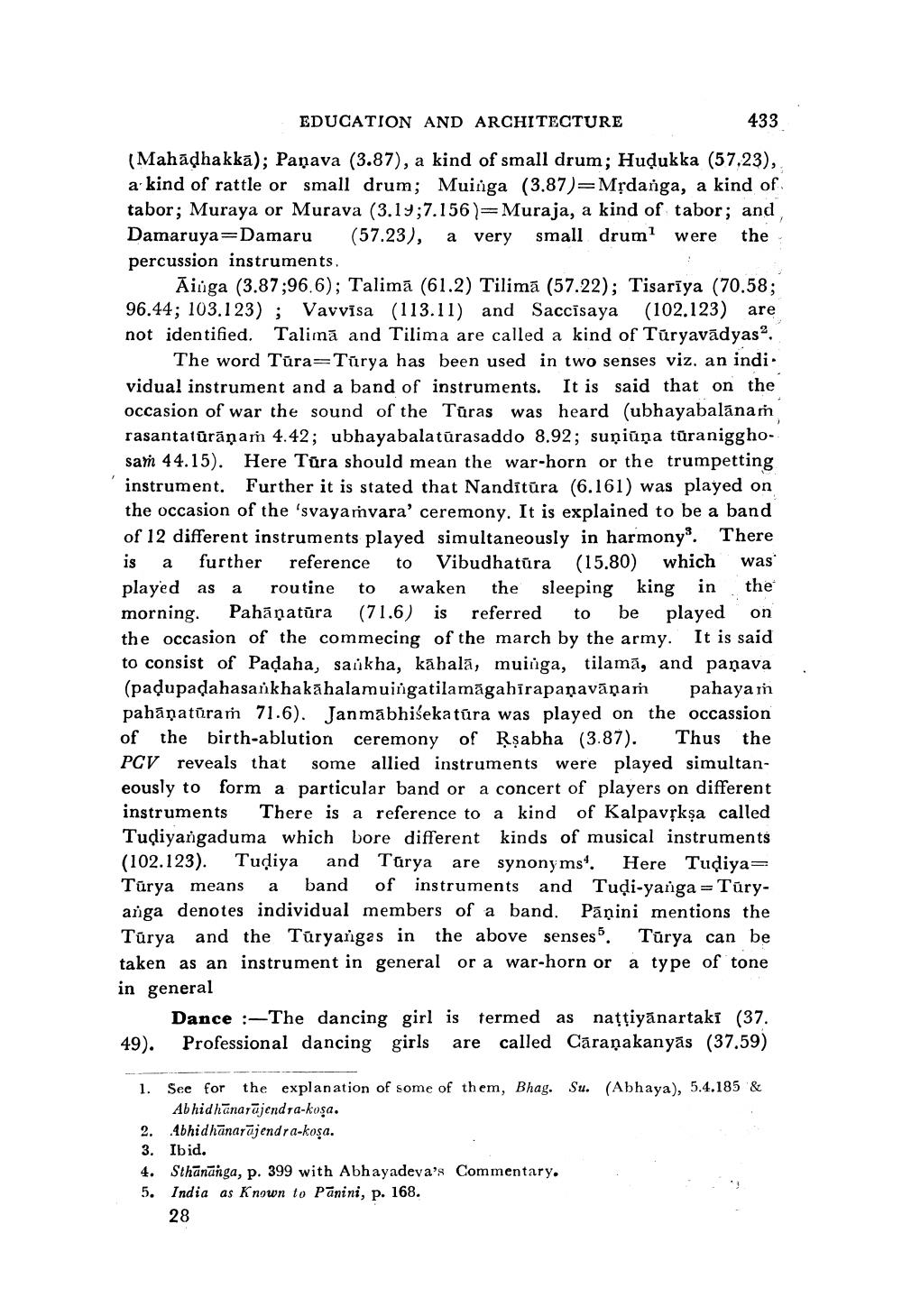________________
EDUCATION AND ARCHITECTURE
433
(Mahādhakkā); Panava (3.87), a kind of small drum; Hudukka (57,23), a kind of rattle or small drum; Muinga (3.87)=Mşdanga, a kind of tabor; Muraya or Murava (3.19;7.156 =Muraja, a kind of tabor; and Damaruya=Damaru (57.23), a very small drum were the percussion instruments.
Aiuga (3.87:96.6); Talimā (61.2) Tilimā (57.22); Tisarīya (70.58; 96.44; 103.123); Vavvisa (113.11) and Saccisaya (102.123) are not identified. Talimā and Tilima are called a kind of Túryavādyasa.
The word Tūra=Tūrya has been used in two senses viz, an indi. vidual instrument and a band of instruments. It is said that on the occasion of war the sound of the Tūras was heard (ubhayabalānam rasantatūrāņam 4.42; ubhayabalatūrasaddo 8.92; suņiūņa tūranigghosam 44.15). Here Tūra should mean the war-horn or the trumpetting instrument. Further it is stated that Nanditūra (6.161) was played on the occasion of the 'svayamvara' ceremony. It is explained to be a band of 12 different instruments played simultaneously in harmony. There is a further reference to Vibudhatūra (15.80) which was played as a routine to awaken the sleeping king in the morning. Pahāṇatūra (71.6) is referred to be played on the occasion of the commecing of the march by the army. It is said to consist of Padaha, saikha, kāhalā, muinga, tilamā, and paņava (padupadahasarkhakā halamuingatilamāgahirapaņavāņam pahayam pahāratūraṁ 71.6). Janmabhisekatūra was played on the occassion of the birth-ablution ceremony of Rşabha (3.87). Thus the PCV reveals that some allied instruments were played simultaneously to form a particular band or a concert of players on different instruments There is a reference to a kind of Kalpavřkșa called Tușiyangaduma which bore different kinds of musical instruments (102.123). Tudiya and Turya are synonyms. Here Tudiya= Türya means a band of instruments and Tudi-yarga = Tūryarga denotes individual members of a band. Pāṇini mentions the Tūrya and the Turyanigas in the above senses. Tūrya can be taken as an instrument in general or a war-horn or a type of tone in general
Dance :-The dancing girl is termed as națțiyānartaki (37. 49). Professional dancing girls are called Cāraṇakanyās (37.59)
1. See for the explanation of some of them, Bhag. Su. (Abhaya), 5.4.185 &
Abhidhanarājendra-kosa. 2. Abhidhānarājendra-kosa. 3. Ibid.
Sthānanga, p. 399 with Abhayadeva's Commentary. 5. India as known to Panini, p. 168.
28




